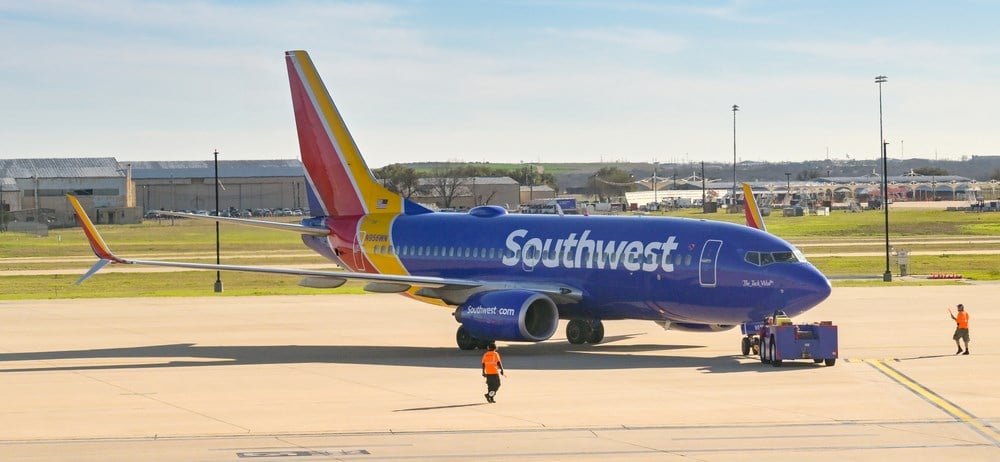
When it comes to airline stocks, anyone can see that virtually every name in the sector has been infected with the fatal effects of a lack of interest from market participants, resulting in a stock price downtrend.
You can judge this allegation by yourself; simply compare the performance of the U.S. Global Jets ETF (NYSEARCA: JETS) against the S&P 500. You will find a direct underperformance of up to 20.0% on a year-to-date basis. Do you think this is a fair assessment of where the travel industry may go?
Industry giants like Goldman Sachs (NYSE: GS) seem to disagree, as they have added names like Southwest Airlines (NYSE: LUV) to their "conviction list."
Gauging the competition
Why is it that of all the respectable names in the industry, Goldman placed their favor and attention on Southwest? You can spread out basic metrics within the sector and reverse engineer this decision to the best of your abilities. Using MarketBeat's stock screener could be a great start to do this.
Beginning with price action, well, there are no clear winners. When taking the current stock price as a percentage of 52-week high prices, nobody has it worse than Southwest. The industry trades at an average of 67.1%, while Southwest stock trades at 61%.
Competitors like Delta Air Lines (NYSE: DAL) have it much better, at 72% of its 52-week high, nonetheless being in a bear market as well, defined by Wall Street as a 20% or more discount from high prices.
You could say that Goldman picked the worst performer since it will provide the most upside in the event of a turnaround. However, things cannot be as easy as picking the worst performer and just calling it a day; otherwise, the Forbes list would need much more space.
Because investors and markets alike focus on the future earning potential of a business, it would be wise for you to ensure that Southwest is not "cheap for a reason" but rather just a victim of market mispricing.
When it comes to expected earnings growth, the industry as a whole is shooting for 9.6% on average for the next twelve months. Now, giant American Airlines (NASDAQ: AAL) expects an EPS contraction of 13.8%, while Delta analysts projected 10.7%.
These rates are nothing to write home about, but what about Southwest? Well, it will become clear why Goldman has landed on this stock rather than its peers.
If you want upside, you got it
Southwest analysts predict EPS growth of 45.7% in the next 12 months, nearly five times above the industry average projection. So, not only is Southwest hovering at the bottom of the industry when it comes to price action, but it is also offering you the most growth.
Markets also agree with this view, as they are pricing these future earnings like they are one sure thing. You can gauge market sentiment around future earnings using the forward price-to-earnings ratio. While the industry trades at an average 5.1x multiple, Southwest is again an outlier.
Carrying an 11.3x forward P/E will put Southwest at a 119% premium to the industry; knowing what you know about the earnings growth, you can't blame markets for being willing to overpay for this business; it is the group's favorite so far!
However, it is not the king of the industry but rather the prince next in line to the crown. You only know the stats for domestic names, but how about a little company dominating Asia's skies called Air China (OTCMKTS: AIRYY)?
Suppose you are courageous enough to invest in Chinese equities like Ray Dalio was. In that case, you will expose yourself to the king of industry statistics. With an expected EPS bump of 78.3% next year, China's return to travel is a giant wave in the making.
Markets know this potential upside, so these earnings are priced at a 228% premium to the industry, with a whopping 16.9x forward P/E. If China is still too "uninvestable" for you, but you must own an airline stock, Southwest is your top choice.
With a consensus price target of $32.10, a net upside of 30% from today's prices could be just the beginning for this legacy name.